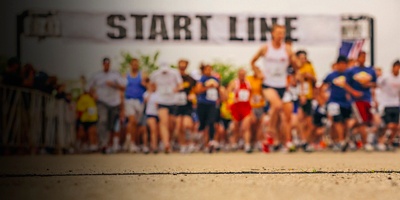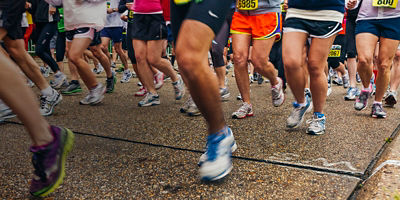
Hopefully, you’ve also rested up in the few days (to a week) beforehand, plus eaten and hydrated well in preparation. Even if your leadup hasn’t been perfect, it’s still OK. Don’t panic. You’ll be surprised at what your body can do with the excitement and adrenaline of a race. But the more you stack the cards in your favor—between proper rest and well-thought training, fueling and hydration—the more ready that you’ll be to unleash yourself on the racecourse.
Here are a few pro tips, including a checklist for what to bring with you, to help you get organized for the morning of the big day.
The Morning Of
Woohoo, it’s race day! Sports nutritionists advise eating 2 to 2.5 hours before the starting gun goes off. How much you should eat depends on the distance of your race, and your own metabolism. Even when you eat will be somewhat of an individual matter. If you digest foods quickly and you can eat a plain bagel an hour before a hard run, err on the side of more sleep instead of rising early to eat.
Simple carbohydrates are the easiest to digest. You want to avoid too much fat, protein, grains, or fiber, as they take longer to digest and can also wreak havoc on your digestive system. A little protein can help satiate you for longer than plain carbohydrates, just don’t go overboard. Examples of simple carbohydrates, some with a little protein include:
- Plain bagel (maybe with peanut butter)
- Banana
- Oatmeal
- Plain waffle or pancake (maybe with peanut butter)
Hydrate with your food, and continue to take small sips of water until the starting gun goes off.
What To Bring to a Race
There are some obvious essentials for a running race, and then some not-so-obvious items that enhance your comfort and enjoyment pre-, post-, and during your race.
On Your Body:
- Running shoes
- Running socks
- Running bottoms that you’ll race in
- Running top that you’ll race in
- Hat you may race in
- Sunglasses you may race in
- Jacket or other layers you may race in (weather dependent)
- Race bib (if you’ve picked it up already)
- Safety pins for said race bib (if you’ve picked up your bib, and your pins, already)
- Waist belt or other item-carrying device you can race/run in, if your apparel doesn’t have pockets for needed items like car keys and ID.
With You Until Race Start:
- Your ID (if you haven’t picked up your bib already)
- Throw-away shirt you could ditch at the starting line and maybe never see again
- Water bottle for before and after
- Any nutrition items you may need/want during, before and after
- Sunblock
- Lip balm
In Your Car/With Your Spectator Friend or Family:
- Dry change of clothes
- Sandals or other post-run shoes
- Sweats for before or after
- Money
- Hat for after, if you’re not racing in one
- Sunglasses for after, if you’re not racing in a pair
- Bag to put all this stuff in




















